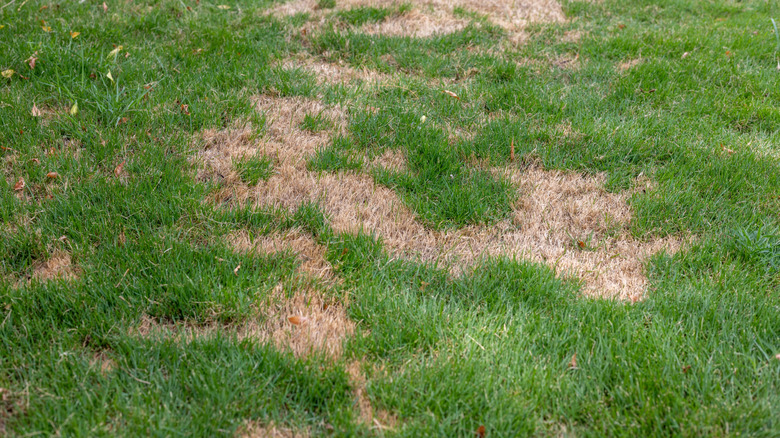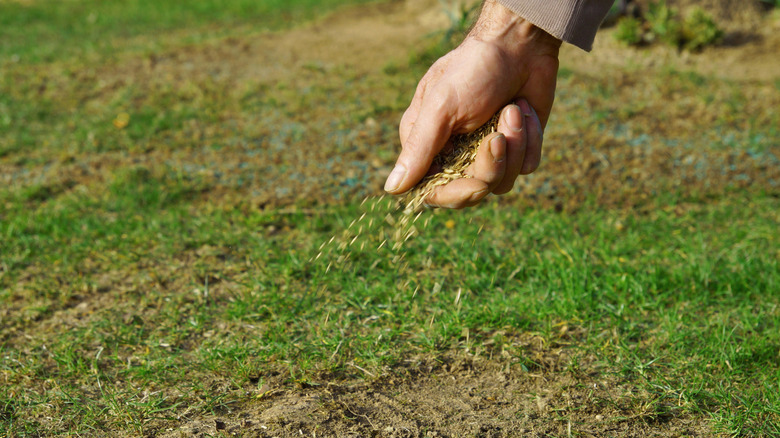Why Perennial Ryegrass Leaves Bald Spots In Your Lawn (And What To Do About It)
If you live in a geographical region that has cool and mild weather, like the Pacific Northwest, you likely know whether perennial ryegrass is a good choice for your lawn. Perennial ryegrass (Lolium perenne L.) is a widely used choice for the region, as it prefers the region's types of conditions for growing. And as a plus, it sports rapid germination, along with a fine blade texture, ideal for achieving a lush, uniform look that'll be the envy of the whole neighborhood. However, the plant is prone to developing bald spots, which can cause frustration for anyone who has a perennial ryegrass lawn. The good news is that with some knowledge and proactive care, you can nix those bald spots and keep your ryegrass lawn looking glorious, rather than having to start a brand new lawn.
Perennial ryegrass's patch problem is typically caused when it is planted in areas that are too hot and dry. So, when summer rolls around with its hot, arid conditions, the turf struggles to stay alive and often ends up dying off in patches here and there, thus creating those annoying and ugly bald spots.
To make things more frustrating, perennial ryegrass also spreads slowly. It forms in clumps with a bunchgrass growth habit, rather than featuring rhizomes that would tell it to spread aggressively sideways (in a similar manner to Kentucky bluegrass). Perennial ryegrass also takes its time maturing. And until it does get established, you are left reseeding any bare spots that show up to keep things looking nice and control weed growth.
How to overseed your perennial ryegrass lawn
Hands down, the most effective way to combat bald spots in a perennial ryegrass lawn is through regular overseeding. The process merely consists of spreading new grass seed over those bald spots to introduce new growth, and this fast-growing seed will have your yard lush in no time. Preparing for overseeding is central to succeeding here, and it is not recommended to seed without taking these steps first.
First, start by mowing your lawn at the lowest recommended height and removing any dead grass from the bare spots themselves. Then, use a rake to gently rough up the soil on and around the bare spots, as this helps to remove any remaining dead grass and create a favorable seedbed for germination. Once the area is prepped, you can begin the overseeding process. Broadcast the perennial ryegrass either by hand or with a spreader, making sure you distribute it evenly over the area you just prepared.
While it may be tempting to use a heavy hand here, don't; instead, keep things moderate and follow any more specific seeding recommendations suggested by the seed manufacturer. Spreading the seed too thickly can lead to competition for resources, which, in other words, results in thin, weak growth. After broadcasting the seed, lightly rake the area again to help work the seeds into the soil, then water it consistently. You should start to see new growth in as little as five days if growing conditions are ideal.

